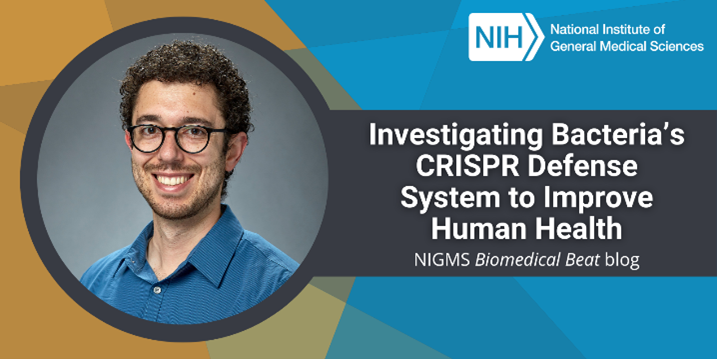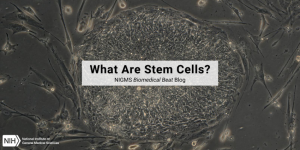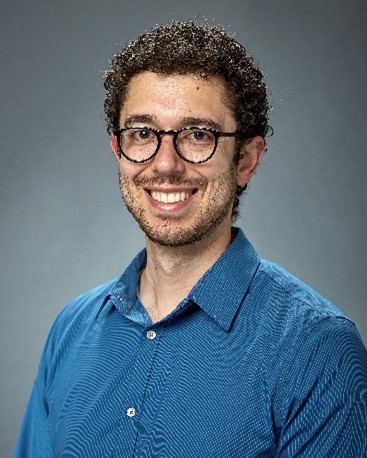
The earliest Andrew Santiago-Frangos, Ph.D., remembers being interested in science was when he was about 8 years old. He was home sick and became engrossed in a children’s book that explained how some bacteria and viruses cause illness. To this day, his curiosity about bacteria persists, and he’s making discoveries about CRISPR—a system that helps bacteria defend against viruses—as a postdoctoral researcher and NIGMS-funded Maximizing Opportunities for Scientific and Academic Independent Careers (MOSAIC) scholar at Montana State University (MSU) in Bozeman.
Becoming a Biologist
Although Dr. Santiago-Frangos wanted to become a scientist from a young age and always found biology interesting, by the time he was attending high school in his native country of Cyprus, he had developed a passion for physics and thought he’d pursue a career in that field. However, working at a biotechnology company for a summer changed his mind. “That experience made me want to dive into biology more deeply because I could see how it could be directly applied to human health. Physics can also be applied to human health, but, at least at that time, biology seemed to me like a more direct way to help humanity,” says Dr. Santiago-Frangos.
He went on to earn his bachelor’s degree in biochemistry from the University of Leicester in England. While there, Dr. Santiago-Frangos spent a year working at a pharmaceutical company and later conducted research in a university lab on how antibiotic-resistance genes spread among disease-causing bacteria.
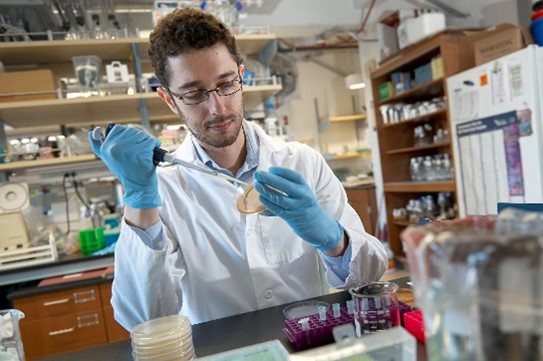
After graduating, Dr. Santiago-Frangos pursued a Ph.D. in biology from Johns Hopkins University in Baltimore, Maryland. Working in the lab of Sarah Woodson, Ph.D., he studied how interactions between a protein called Hfq and RNA molecules help regulate bacteria’s stress responses. While wrapping up his doctoral research, Dr. Santiago-Frangos began considering what to focus on next. “I’d gained a detailed understanding of the interactions between proteins and nucleic acids within a specific system, and I wanted to apply that expertise to a different problem,” he says.
Dr. Santiago-Frangos ultimately set his sights on CRISPR, which scientists have adapted into a gene-editing tool. In the spring of 2018, he took a position as a postdoctoral researcher at MSU in the lab of Blake Wiedenheft, Ph.D., which focuses on the interactions between bacteria and the viruses that infect them. While there, he applied and was accepted into the MOSAIC program—a two-part award that provides funds for the end of his postdoctoral work as well as up to 3 years of independent research once he moves into a faculty position.
The Origami in Immunity
Dr. Santiago-Frangos’ postdoctoral research has two main parts: better understanding how CRISPR works in bacteria and using CRISPR as a basis for diagnostic tests. CRISPR is adaptive, meaning it stores information about viruses that a bacterium has previously encountered. This enables the bacterium to recognize the viruses and fight them off more quickly in the future.
To understand how CRISPR creates a “memory” of a virus, Dr. Santiago-Frangos suggests imagining two pages of instructions. One of these is the bacterial genome, and the other is the viral genome. The bacterium has scissorlike molecules that snip a sentence from the viral page. Then, this sentence needs to be included on the bacterial page, but the new words can’t go just anywhere because they might interfere with instructions the bacterium needs. So, the bacterium folds its genome like origami to make the perfect spot for adding the viral sentence—technically called the “leader end of the CRISPR locus.” Not only does adding the viral sentence in this spot prevent it from disrupting other critical instructions that the bacterium needs to survive, but it also essentially adds the virus to the top of the bacterium’s most-wanted list.
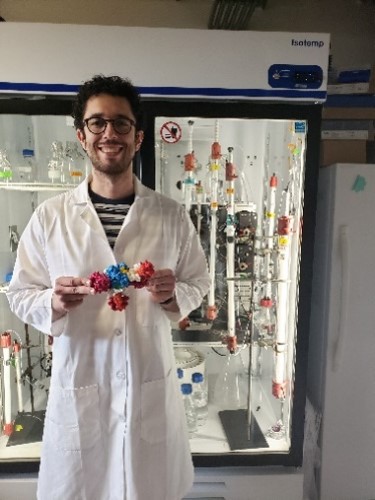
“I’ve wanted to apply different techniques to the same problem to create a holistic understanding of what’s happening at the microscopic level,” Dr. Santiago-Frangos explains about his investigation into how the genome folds and how bacterial molecules appropriately guide the viral sentence. “I’ve used bioinformatics to find specific motifs in the genome that fold the DNA into this special shape. I’ve used biochemistry to test the importance of these motifs for inserting the viral information. And now I’m using cryo-electron microscopy (cryo-EM) to gain an understanding of how the CRISPR system looks in 3D space and how all of these moving parts come together.”
Dr. Santiago-Frangos also led a team to create a diagnostic test for COVID-19. The team tweaked a bacterial CRISPR system so that it would sense SARS-CoV-2—the virus that causes COVID-19—in nasal swabs from patients and release an easily detectible signaling molecule. Dr. Santiago-Frangos hopes to apply this technology to other diseases in the future.
“What fulfills me is making discoveries about how things work at this microscopic scale in biology, realizing the huge impacts those discoveries can have on our well-being, and then sharing those findings,” he says. In addition to aiding the creation of diagnostic tests, he believes studying CRISPR can help us better understand human microbiota, develop treatments based on bacteria-infecting viruses, and more.
Supporting Young Scientists
An important part of the MOSAIC program is ensuring that scholars have appropriate mentoring and professional networks and that they develop the professional skills they’ll need in their future roles as independent research professors. Dr. Santiago-Frangos is focused on mentoring younger scientists, especially those from backgrounds that are underrepresented in STEM. He worked with Dr. Wiedenheft on one of his summer outreach programs, Montana Wild Virus Hunt, which introduces rural high school students to scientific research and the university environment. He also designed a summer research program for an undergraduate through a program that provides training opportunities for scientists from underrepresented groups. Toward the end of the student’s experience, Dr. Santiago-Frangos helped him create his first research poster and present it at a conference.
In addition, Dr. Santiago-Frangos mentored two MSU undergraduates who have since received their bachelor’s degrees. They worked with him on different aspects of his CRISPR research, and both received Goldwater scholarships—prestigious awards given annually to a few hundred U.S. undergraduates who plan to pursue research careers in STEM. One is planning to earn a Ph.D., while the other hopes to attend medical school.
“I really appreciated how patient my mentors were and how they found multiple ways to explain the same concept, because different explanations resonate with different students. I try to carry that on as a mentor myself and to just be kind, because I think that’s very important,” says Dr. Santiago-Frangos.
He plans to continue sharing his infectious enthusiasm for research and making discoveries about CRISPR as he starts his own lab at the University of Pennsylvania in Philadelphia in January 2024, using the second part of his MOSAIC award funding.
Dr. Santiago-Frangos’ work is supported by NIH MOSAIC grant GM147842.


